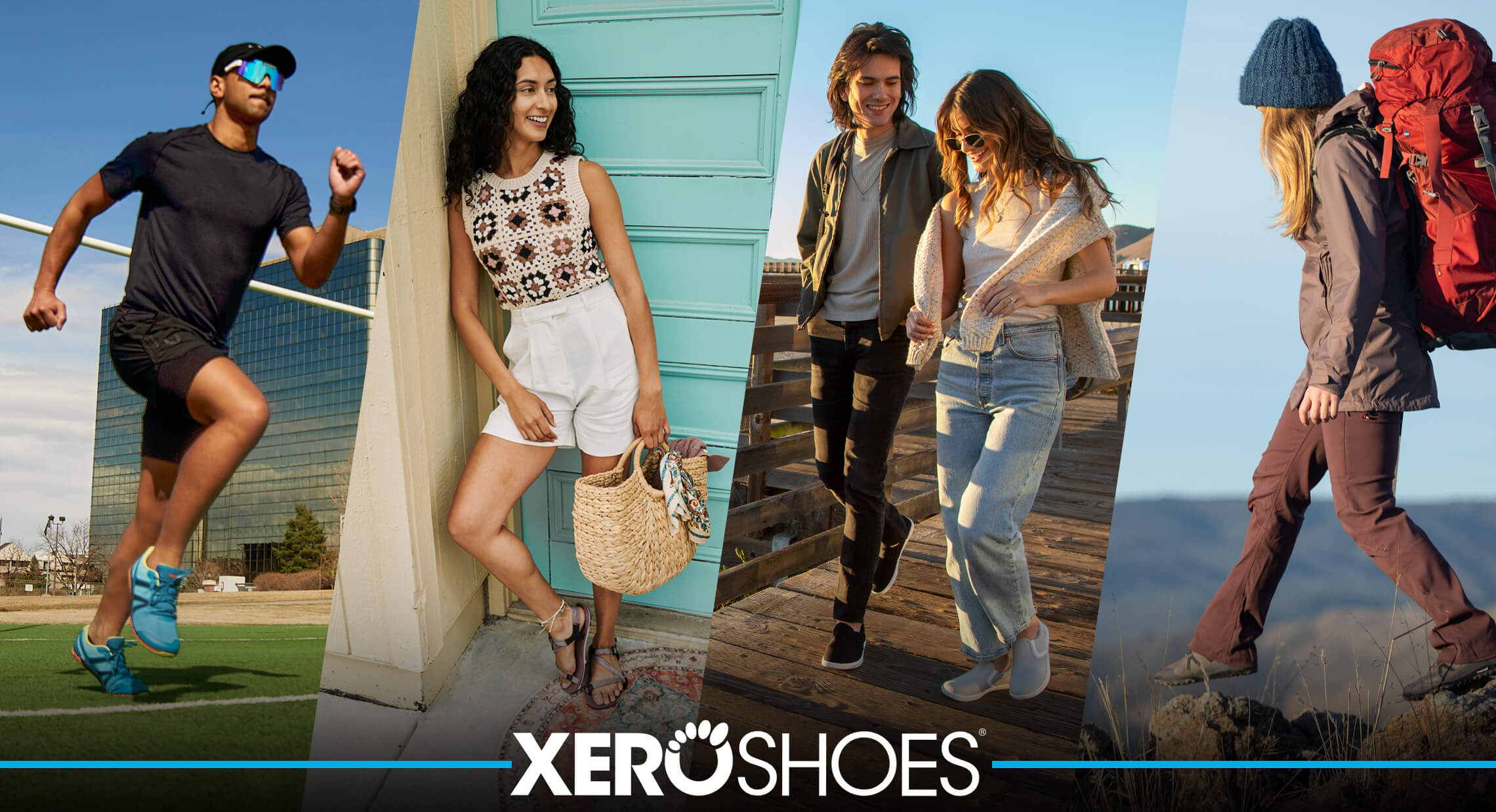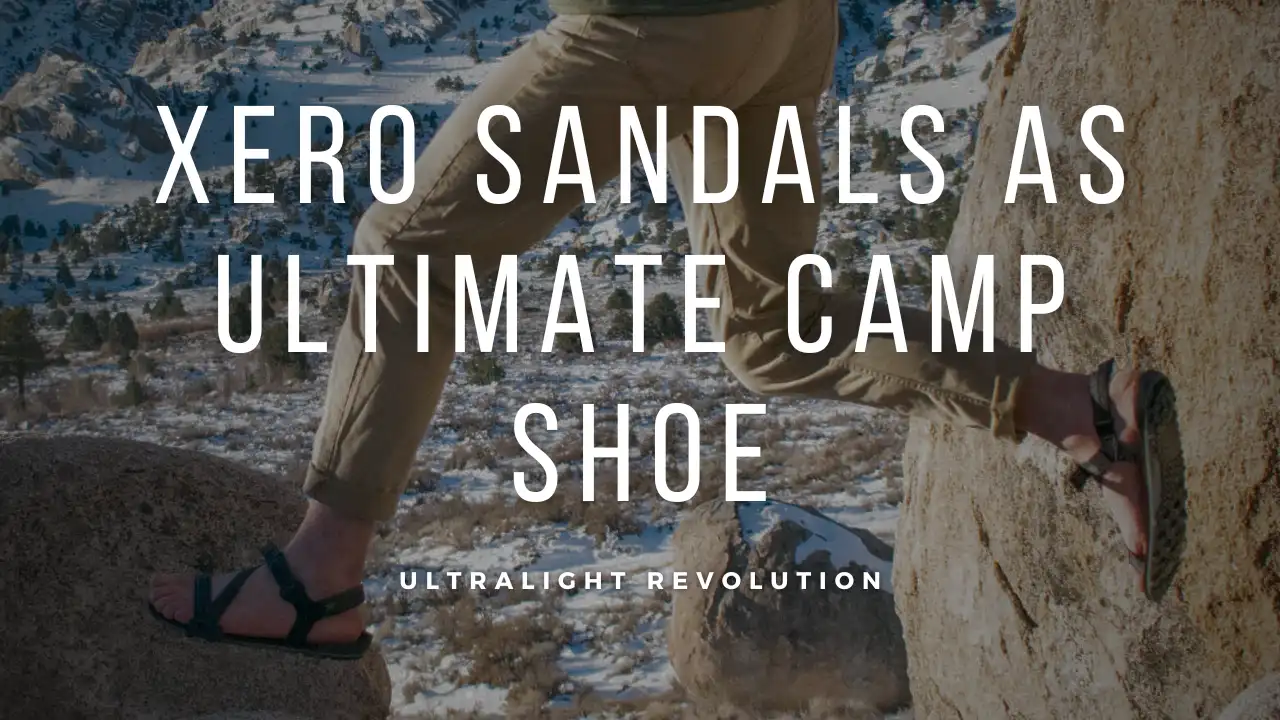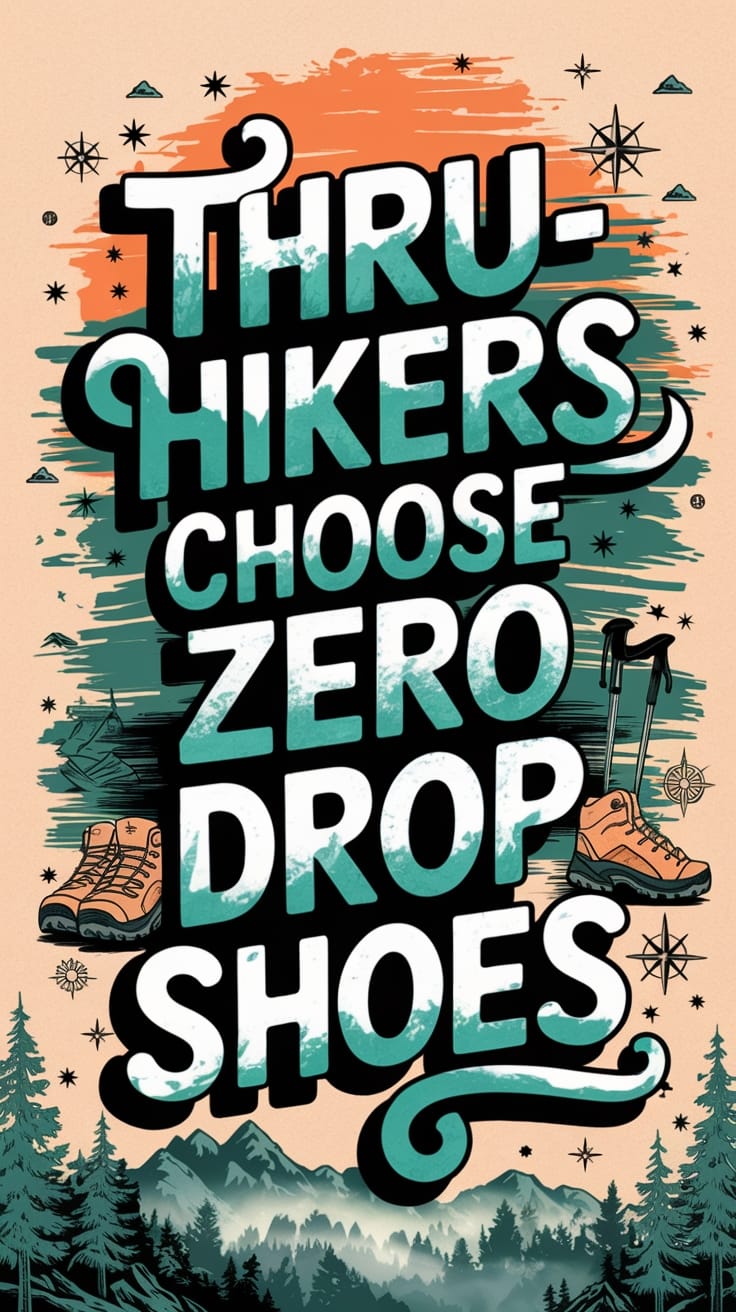If you're looking for a hiking shoe that gives your foot more of a natural feel, you might want to consider zero drop hiking shoes, also known as trail runners. Many thruhikers and backpackers have been converting from boots over to a zero drop approach due to the benefits they can provide.
A zero-drop trail shoe has no difference in height between the heel and toe. This allows your foot to sit level with the ground, similar to barefoot. This can be beneficial if you frequently encounter knee pain or seek extra stability on rugged terrain.
What makes a zero-drop trail runner suitable for thru-hiking? In this blog post, we'll discuss zero drop shoes, benefits ad drawbacks, as well as what you need to know before making the change to your shoe selection!
Zero-Drop Shoe Advantages
The zero-drop shoe is designed to be more natural, similar to walking barefoot, by keeping your foot at the same positioning without the heel being moved higher than the toes. This is why they have taken over from the more conventional hiking boots.
Let's look at some zero drop shoes advantages and why hikers over the last decade have been converting more and more to less bulky and more nimble minimalist hiking shoes.
Shoe Weight
For most hikers, traditional hiking boots are a relic of an older time, tied to 70-pound backpacks and the need to help have rigid support for carrying massive weight over a distance, my Lone Star gear for example is around 10 pounds in base weight.
Today's backpacking is incredibly lightweight versus the the previous generations of hiking gear.
A pair of even minimalist hiking boots will weigh pounds and be rigid, whereas a zero-drop shoe will frequently be less than a pound sometimes for both added together.
All this means less exhaustion on your legs from needing to lift the shoe, allowing faster, more adaptive movements on the trail.
More Stable Platform Helps Balance
When you have a shoe with no change from heel to toe, this helps you naturally balance using your toes and foot to help keep you upright.
The more flexible and flat the hiking shoe, the better your proprioception will be (the ability to sense movement in your limbs.)
This can help prevent injuries as you grow older and become more experienced on the trail by allowing your body to automatically adjust its positioning without thinking about it too much!
Rediscover Your Natural Stride
Face it, humans weren't born with shoes on their feet. We are meant to walk about on our feet without our heels being higher than our toes, which means evolutionary design chose a more flat foot, hence the newer barefoot hiking boot and the transition to zero-drop shoes.
Moving to more barefoot hiking boots or shoes like zero drops with good insoles will help you have a more natural gait and also help reduce stress on your hips and knees.
This will also allow your Achilles tendon and calf muscles to assist in movement, which is less used when shoes have a raised heel.
Reduce Knee Pain on Descents
Hikers frequently have knee pain when hiking downhill from the strain of longer descents, frequently done multiple times daily. The higher the drop of the shoe, the more strain is aimed directly at the knee.
Zero drops help move or adjust this point and allow the entire leg to contribute from the toes to the hips instead of mainly on the knee area, leading to less focused pain, like "trekkers knee" and the irritating hiker hobble.
If you move to a zero-drop shoe, you can start to help out your knees and recruit more muscles from your legs to do the proper job of supporting your movements and helping them become stronger!
Enlarged Toe Box
Most zero-drop styled shoes will come with an enlarged wide toe box, which allows your foot to grow and lay flat with toes being able to move and adjust; one thing many thru-hikers may not know before they start hiking is your feet tend to grow with consistent walking.
An enlarged toe box helps give this room to move and breathe, and if they should grow a bit, the room to expand without being crunched with too little space.
This is why most people will size up a half or even full size in their choice of trail runners, like Altra zero drop hiking shoes or the Hoka series.
Tips to Make the Switch

These shoes may sound like wonder all fixes for issues that may be ailing you, but some work should be done before buying a new pair and just heading out onto the trail.
Instead, it would be best if you took some time to let your body readjust to the massive change. Putting in some solid miles with the shoes alone around town is a good way to help your legs adjust while your legs and stride adjust.
Breaking Your Foot In - Adapt Over Slowly
If you haven't been using zero-drop shoes, then you more than likely have less developed tendons like the Achilles, along with lower calf muscle due to the overall lack of use.
This is normal and more due to the higher the heel the more work was done by the knee and thighs, but this does mean it takes time to have new muscles react and respond.
If you don't take it slow, it can lead to foot pain, including plantar fasciitis, so the more time you can spend adjusting to the more natural shoe choice the better you will perform on the trail over the long term.
Put in Miles on Walks Near Home First
You won't want to start with long treks away from home when you are changing shoes as these muscles may not have worked very hard for a long time, which leads to exhaustion much faster.
Large and tired tendons and recovering muscles aren't something you want to experience while on the trail as you need to give them proper downtime, which can be a problem out on a trail away from help and support.
Staying close to home while building these muscles will lead to a more enjoyable longer hike after you have them adequately strengthened, and over time, your muscles will recover faster and faster with less exhaustion in between, making hiking more fun.
Adapting to a New Stride
Those moving from a shoe with a drop will find that their stride changes and becomes different than before in the other shoes, and this is a good thing as it means the entire lower body is more involved and moving towards a more natural stride.
This may take some adjustment if you have spent decades in tennis shoes and not much time in your bare feet. It is well worth it, though, and will make you more effective if you allow the process to work itself out.
Potential Drawbacks to Consider
As with most changes, there are also some issues or drawbacks people experience with a change in footwear, especially when they switch over to more barefoot shoes with flexible soles, as it can frequently be exhausting and worse if you push it too hard and too fast.
More Pressure on Lower Leg Muscles and Tendons
When you move to these shoes, you will have to build underutilized muscles and tendons, leading to pressure and possible injuries if done fast and without the time to adapt.
The most common issues are related to calf and Achilles injuries as the body hasn't used them, so they are weaker than the other muscles and tendons in the leg and foot. Adjusting these can take three to six months, which is almost as long as an Appalachian Trail thru-hike.
If you are looking to hike earlier than three months out, you probably shouldn't begin looking to swap shoes until you finish the planned hike, where you can give your body the time it needs and desires.
Not Supportive on Steep Hills
When you have higher heels, it helps support you on those long descents. When you move over to a zero-drop shoe you lose this support you may not even notice you have from your current shoes.
This can lead to exhausting your legs and feet much sooner as all the little tendons and muscles will have to manage the balancing act for you.
This leads to shorter distances hiking on a given day when there are a lot of ups and downs like the Appalachian Trail has.
Little Arch Support
If you don't work to strengthen the muscles in your foot before, they will be unable to assist and help keep your foot functioning as expected.
This can lead to the foot collapsing, cascading into a foot, knee, and hip issue over time as the foot tires.
Zero-Drop Boot Options for Hikers
While most will focus on zero-drop shoes like trail runners, there are some pretty good options for a zero-drop hiking boot that many may know even exist.
Though boots are typically much more limited in style, they can be a good option for those who want a boot but want to move to a zero drop for better control.
Some good choices for the best zero-drop hiking shoes:
- Xero Shoes makes footwear called the Xcursion Fusion, which is an excellent minimalist boot that is also waterproof, which many specifically want in their boot. Their Xcursion Fusion is a newer and better version of the popular original.
- LEMS makes a boot called the Boulder Boot, which comes in Nylon, Vegan, Leather, and waterproof options, allowing you to find the perfect match. The natural foot-shaped boot has become the preferred choice for travelers seeking to save space and weight when on the move.
- Altra, which makes some of the most loved trail runners, has its own Lone Peak Hiker Trail Running Shoe. This is a boot fit for those who would like the extra ankle support an everyday runner won't provide them.
As you can see from the above, you can choose to go with a boot but still gain the benefits a zero-drop shoe can provide; you must be willing to look around a bit more.

Making the Switch: Adapting to Zero-Drop Shoes for Thru-Hiking Success
If you're looking for a hiking shoe with zero drop, it's worth taking the time to explore your options. While trail runners are the most popular option, there are also hiking zero-drop boots available that offer very similar benefits.

Be sure to consider how long it will take you to adapt to the new shoes before choosing to embark on a long hike with barefoot hiking shoes, and make sure your body has had proper time to adjust before leaving.
Just because what you bought is a "popular shoe" doesn't make it the right option for you, and if you have other issues like wide feet, flat feet, or another more common issue, you need to get a shoe that works with your issue so as not to cause more problems.
Most choose a minimalist shoe due to its comfort and being constructed with breathable materials, allowing it to dry faster when wet.
Remember that your feet will end up wet on a thru-hike, and drying is an critical task not considered until too late.









